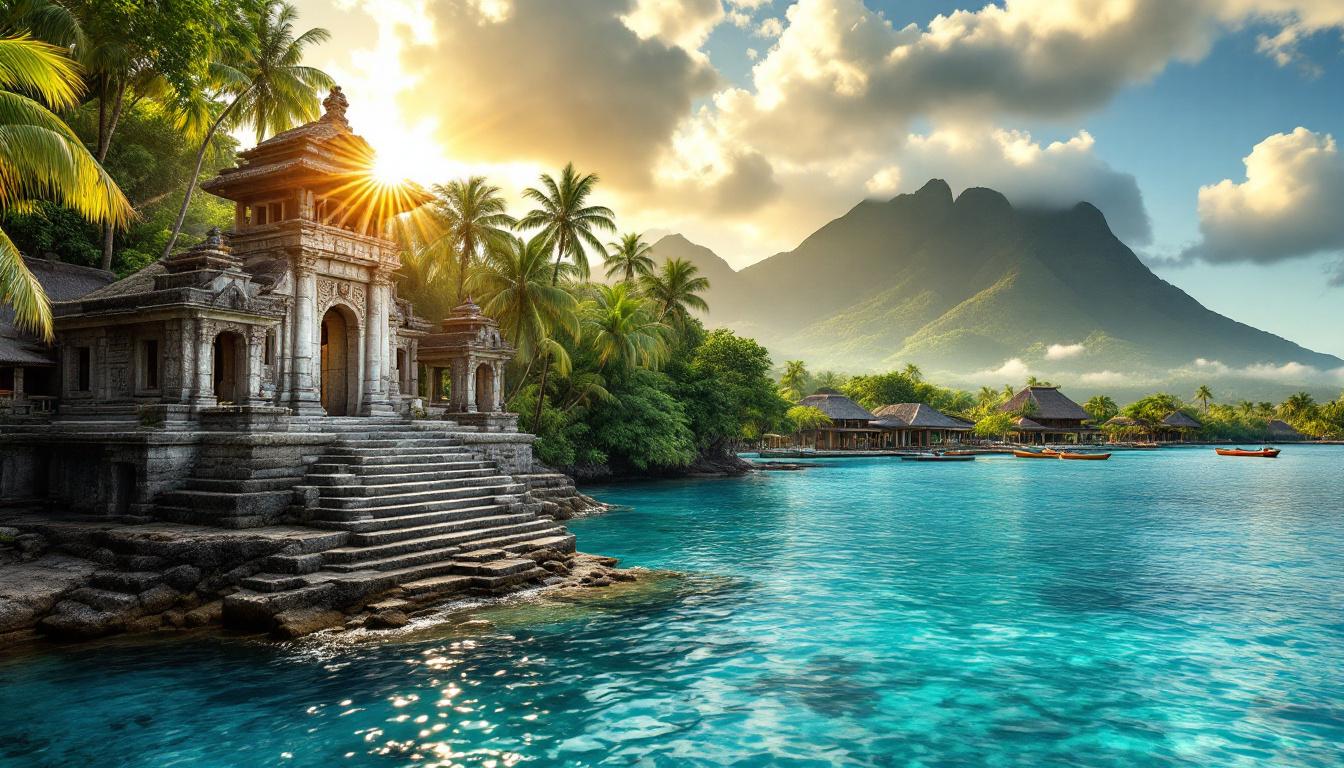Deep within French Polynesia’s Society Islands, Huahine’s 6,000 residents have quietly maintained one of the Pacific’s most extraordinary cultural treasures. While cruise ships dump thousands of visitors onto neighboring Bora Bora’s overcrowded shores, this 65-square-kilometer island protects over 500 ancient marae temples with fierce determination.
Local families here aren’t just islanders—they’re cultural guardians of Polynesian heritage dating back over 1,300 years. When developers approached village chiefs about resort construction near sacred sites, the community’s response was swift and unified: absolutely not.
The protection runs so deep that many residents still whisper directions in Tahitian rather than posting signs, ensuring only respectful visitors who take time to connect with local culture discover their hidden temples and pristine lagoons.
Why locals actively discourage mass tourism
Sacred marae sites require cultural protection
Unlike Bora Bora’s commercialized landscape, Huahine’s ancient marae temples remain spiritually active. Polynesian families still conduct traditional ceremonies at these stone platforms where their ancestors once worshipped Oro, the god of war and fertility. Local elder Teiva Manutahi explains that each temple tells part of their creation story—knowledge too sacred for casual Instagram photos.
Small island infrastructure can’t handle cruise crowds
With French Polynesia receiving 326,632 visitors in 2024, Huahine deliberately limits accommodation to small guesthouses and family-run pensions. The island’s single airport runway and narrow coastal roads simply cannot support the 3,000-passenger ships that dock weekly in Bora Bora. This isn’t an accident—it’s intentional cultural preservation.
The authentic Polynesian experience tourists miss
Traditional village life continues unchanged
In Huahine’s eight villages, daily life follows rhythms unchanged for generations. Women still weave pandanus leaves into baskets at sunrise, fishermen navigate by ancient star maps, and families gather for communal meals cooked in underground ovens called ahima’a. These aren’t tourist performances—they’re genuine cultural practices protected from commercialization.
Access to living archaeological treasures
The island’s Maeva village contains the largest concentration of marae temples in French Polynesia, some dating to 700 AD. Unlike roped-off museum exhibits, these sacred sites remain integrated into community life. Respectful visitors who earn local trust might witness traditional blessing ceremonies or learn about Polynesian navigation techniques passed down through oral tradition.
How respectful travelers can visit responsibly
Connect with cultural practitioners first
Local guides like Raimana Teuira offer authentic cultural exchanges rather than standard tours. His family has guarded specific marae sites for seven generations, sharing stories and protocols that honor ancestral traditions. These intimate encounters cost around $80 per person—supporting local families while ensuring cultural respect.
Choose community-based accommodations
Family-run pensions like Pension Mauarii or Fare Maheata offer genuine Polynesian hospitality for $120-180 per night, compared to Bora Bora’s $800+ resort rates. Guests eat meals with host families, learn traditional crafts, and contribute directly to the local economy without overwhelming community resources.
The cultural preservation locals are protecting
Ancient Polynesian knowledge systems
Huahine’s residents maintain traditional ecological knowledge about medicinal plants, sustainable fishing, and weather patterns their ancestors developed over millennia. This wisdom faces extinction if mass tourism transforms the island into another resort destination. Local schools now teach these practices alongside French curriculum, but community elders worry about cultural dilution.
Spiritual connection to ancestral lands
Every stone, reef, and mountain on Huahine holds spiritual significance in Polynesian cosmology. Families trace their genealogies through specific locations, maintaining spiritual connections that tourism development threatens to sever permanently. The marae temples aren’t historical artifacts—they’re living connections to divine ancestors who still guide community decisions.
Visiting Huahine requires more than buying a plane ticket—it demands cultural humility and genuine respect for community wishes. The island’s protection isn’t about excluding tourists, but about ensuring that those who come understand they’re entering sacred space where ancient wisdom still guides daily life.
If you’re seeking another Instagram backdrop, choose Bora Bora instead. But if you’re ready to experience authentic Polynesian culture with deep respect for local values, Huahine’s guardians might just welcome you into their remarkable world of living traditions and ancestral wisdom.
